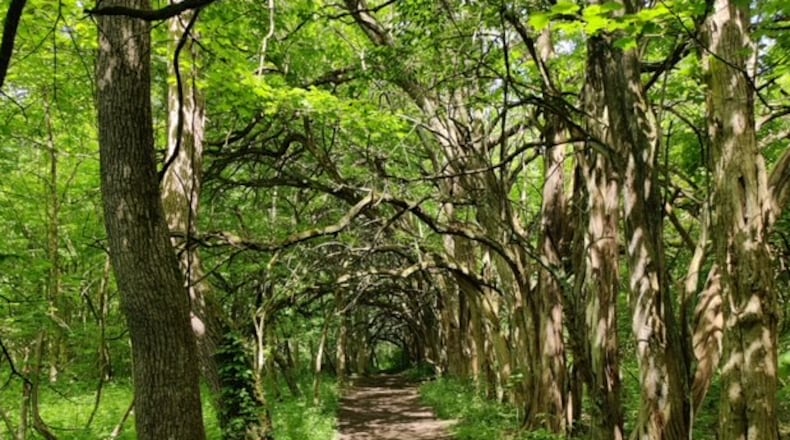And now the collective we, the citizens of Montgomery County, have an opportunity before us to ensure that Five Rivers MetroParks continues to be the best version of itself and carry forward the excellence rightfully to be expected from our fellow residents and voters. For on Election Day, November 5th, Issue 35 will appear on the ballot in Montgomery County to promise that continued excellence of the Five Rivers MetroParks system of community lands, facilities and programs both now and into the future. This new 10-year, 1 mill property tax levy will cost property owners in Montgomery County $35 annually, or less than $3 a month, per $100,000 property valuation. Honoring the public trust has always been and will always be the top priority of MetroParks, and placing an issue like this on the ballot has never and will never be taken lightly.
One of the beauties of Five Rivers MetroParks is that it can mean so many different things to so many different people through millions of visits per year. The ability to design an outdoor lifestyle for you or your family and friends is what constitutes that personal connection and sense of ownership. Whether it’s the conservation responsibility that drives you through the safeguarding of 16,000 acres and the sensitive natural habitats contained within or gaining your own insights into our local natural world through educational offerings. Whether its attending on outdoor recreation class or learning about horticulture. Maybe its visiting the Second Street market or taking to the trail network spanning over 350 miles. Or maybe it’s that simple yet essential escape to take in the peace and quiet alone with your thoughts as so many did during the pandemic. MetroParks has something for you in a clean, safe and close to home setting.
As regards the community impact as a whole, we need to understand the economic contribution MetroParks makes to our shared home. It is undeniable that MetroParks helps define the personality of our region and what we value. The kind of opportunities and facilities offered by MetroParks are necessary to the attraction and retention of talent in our region required for local business to come, stay and grow. A prime example is RiverScape—a community collaboration meant to invigorate downtown Dayton and the adjacent riverway environment under MetroParks leadership and operation. We think the results speak for themselves.
From the responsible and transparent use of local taxpayer dollars to providing the highest quality personal experience in your interactions with MetroParks, assuring you understand the value received in exchange for the trust and investment being requested is paramount. MetroParks has always strived to deliver on their promises and has never accepted “the status quo” or anything less as an agency standard. That is not who Five Rivers MetroParks is.
Perhaps what we have shared is old news to you but it needs reinforcing from time to time and particularly in this instance. These lands and facilities belong to all of us in perpetuity, and it is our responsibility to make certain that we take care of them to the best of our abilities during our time as stewards. We know the commitment of the Board of Park Commissioners, staff and volunteers of MetroParks and how personal they take their responsibilities. They will deliver. So please join us in supporting MetroParks by saying YES to Issue 35 on Nov. 5!
Marvin Olinsky was appointed as the third Director-Secretary effective December 1, 1986. Under his direction, MetroParks grew to an 11,000-acre system with 23 facilities and an annual attendance of 5.6 million. Olinsky was also responsible for changing the system’s name from the more prosaic Park District of Dayton and Montgomery County to Five Rivers MetroParks.
In July, 2001, The Board of Park Commissioners appointed Charles Shoemaker, who had been with MetroParks since June, 1977 (most recently as chief operations director), as MetroParks new executive director. During his years with MetroParks, Shoemaker had developed an in-depth knowledge of MetroParks, especially in the areas of finance, operations and land protection, and was well prepared for his new role. Protection of natural resources and land stewardship continued to be a priority. By February 2003, MetroParks was responsible for 11,787 acres and offered 24 facilities for public enjoyment.


